*NURSING > HESI > HESI Remediation (NCLEX-PN) (100% Verified) Latest Questions and Complete Solutions (All)
HESI Remediation (NCLEX-PN) (100% Verified) Latest Questions and Complete Solutions
Document Content and Description Below
NCLEX-PN Remediation Elimination A male client reports dysuria, nocturia, and difficulty starting the urinary stream. A cystoscopy and biopsy of the prostate gland have been scheduled. After the p... rocedure the client reports an inability to void. What should the nurse do? Rationale: Palpate above the pubic symphysis A full bladder is palpable with urinary retention and distention, which are common problems after a cystoscopy because of urethral edema. Fluids dilute the urine and reduce the chance of infection after cystoscopy and should not be limited. Although urinary retention can occur, it is not expected; the nurse must assess the extent of bladder distention and discomfort. More conservative nursing methods, such as running water or placing a warm cloth over the perineum, should be attempted to precipitate voiding; catheterization carries a risk of infection. A nurse is obtaining a health history from the mother of a 15-month-old toddler with celiac disease. The nurse expects the mother to indicate what about her toddler? Rationale: Has bulky, foul, frothy stools Steatorrhea (fatty, foul-smelling, frothy, bulky stools) occurs with celiac disease because of an intolerance to gluten; toxic substances, which can damage the intestinal mucosal cells, accumulate and cause diarrhea. Drinking large amounts of fluid is a response to dehydration. With celiac disease some thirst may occur, but it is not continuous. Although infants with celiac disease are irritable, this sign is too vague for accurate evaluation. Irritability is symptomatic of a variety of problems, ranging from cutting of teeth to leukemia. Concentrated urine is associated with a urinary tract infection or dehydration; this sign is too vague to permit accurate evaluation. A client with an ileal conduit is being prepared for discharge. As part of the discharge teaching, what does the nurse instruct the client to do? Rationale: Maintain fluid intake of at least 2L daily High-fluid intake flushes the ileal conduit and prevents infection and obstruction caused by mucus or uric acid crystals. Alcohol is not contraindicated with an ileal conduit. Notifying the health care provider if the stoma size decreases is expected; as edema decreases, the stoma will become smaller. Soap and water on the peristomal area help prevent irritation from waste products. [Show More]
Last updated: 1 year ago
Preview 1 out of 65 pages
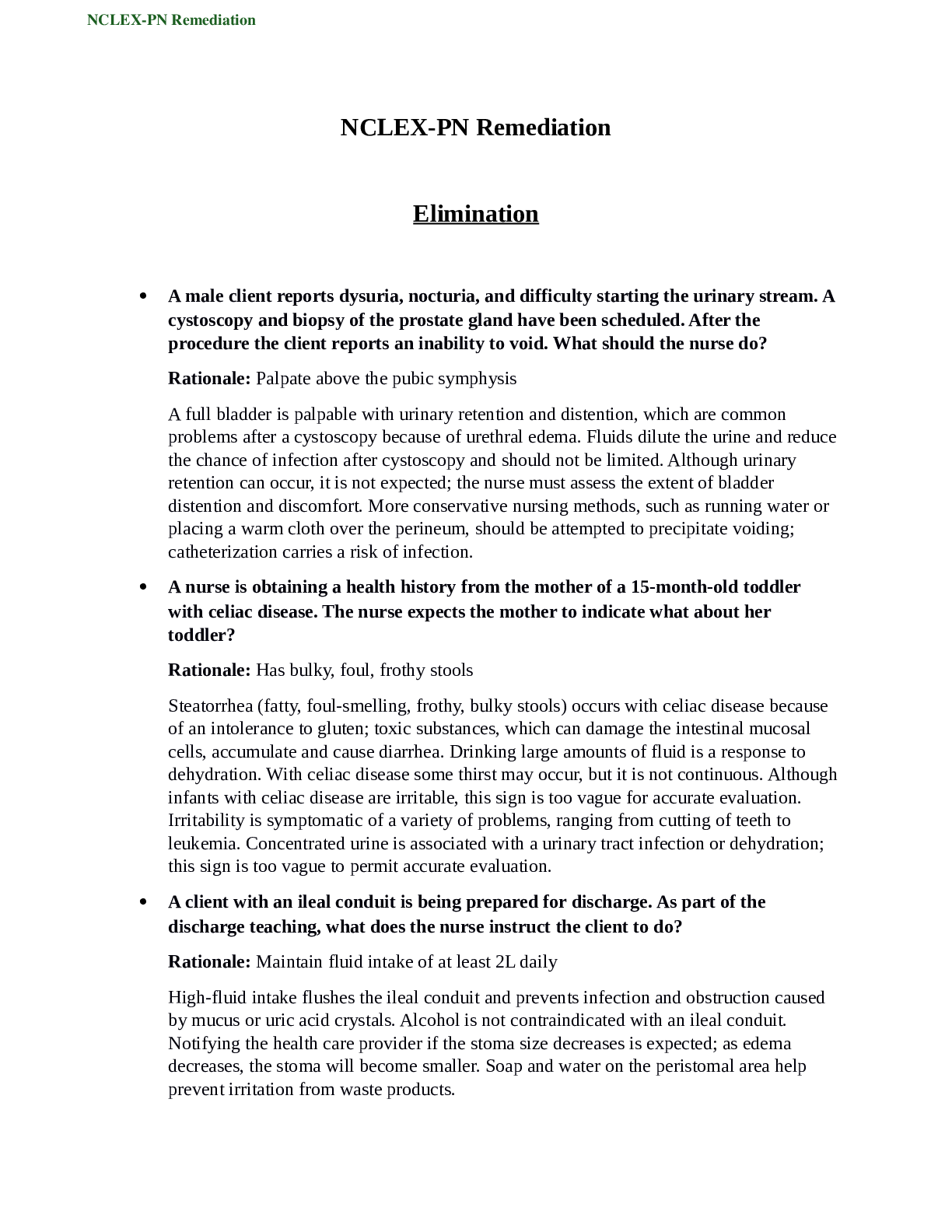
Reviews( 0 )
Document information
Connected school, study & course
About the document
Uploaded On
Jun 01, 2021
Number of pages
65
Written in
Additional information
This document has been written for:
Uploaded
Jun 01, 2021
Downloads
0
Views
35


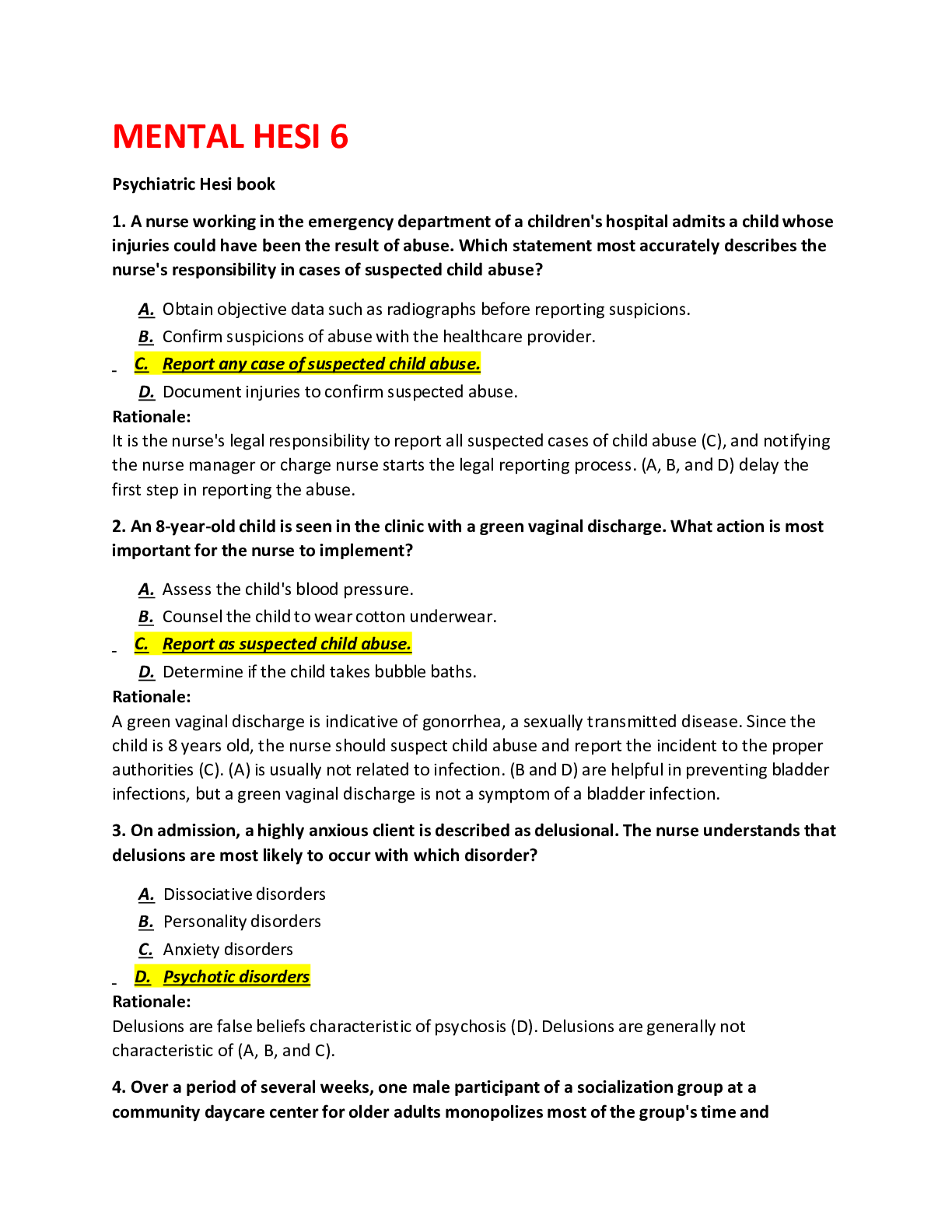
.png)


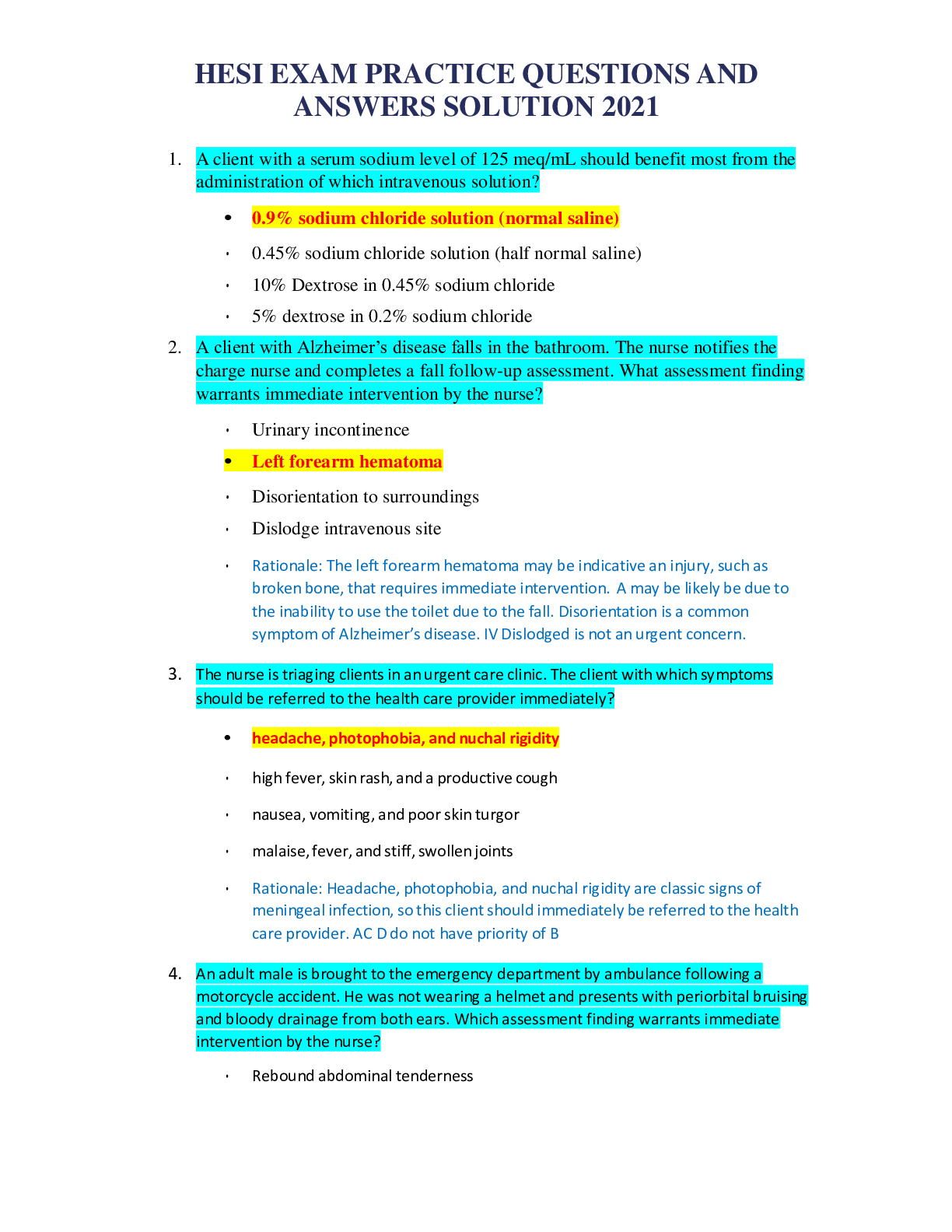
.png)
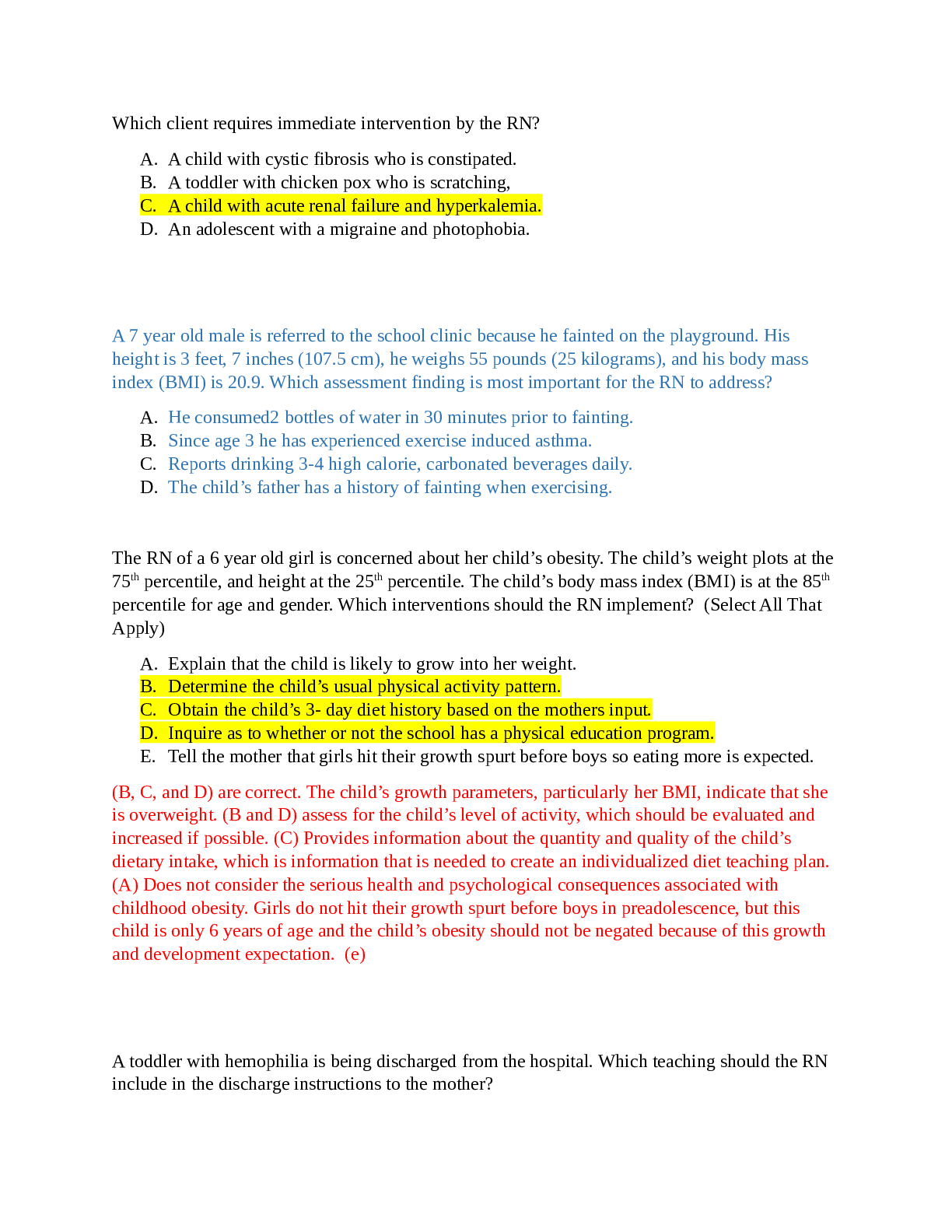



.png)
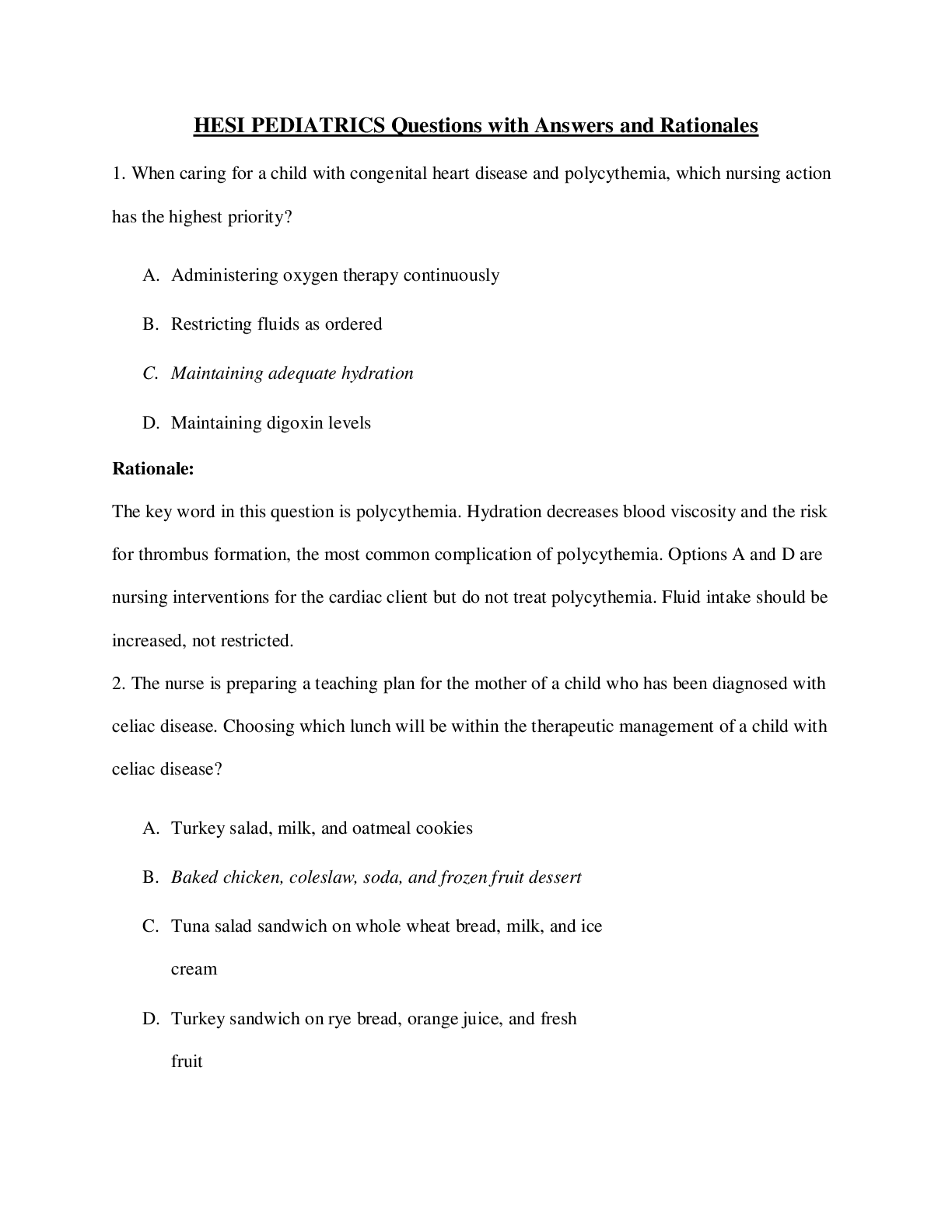
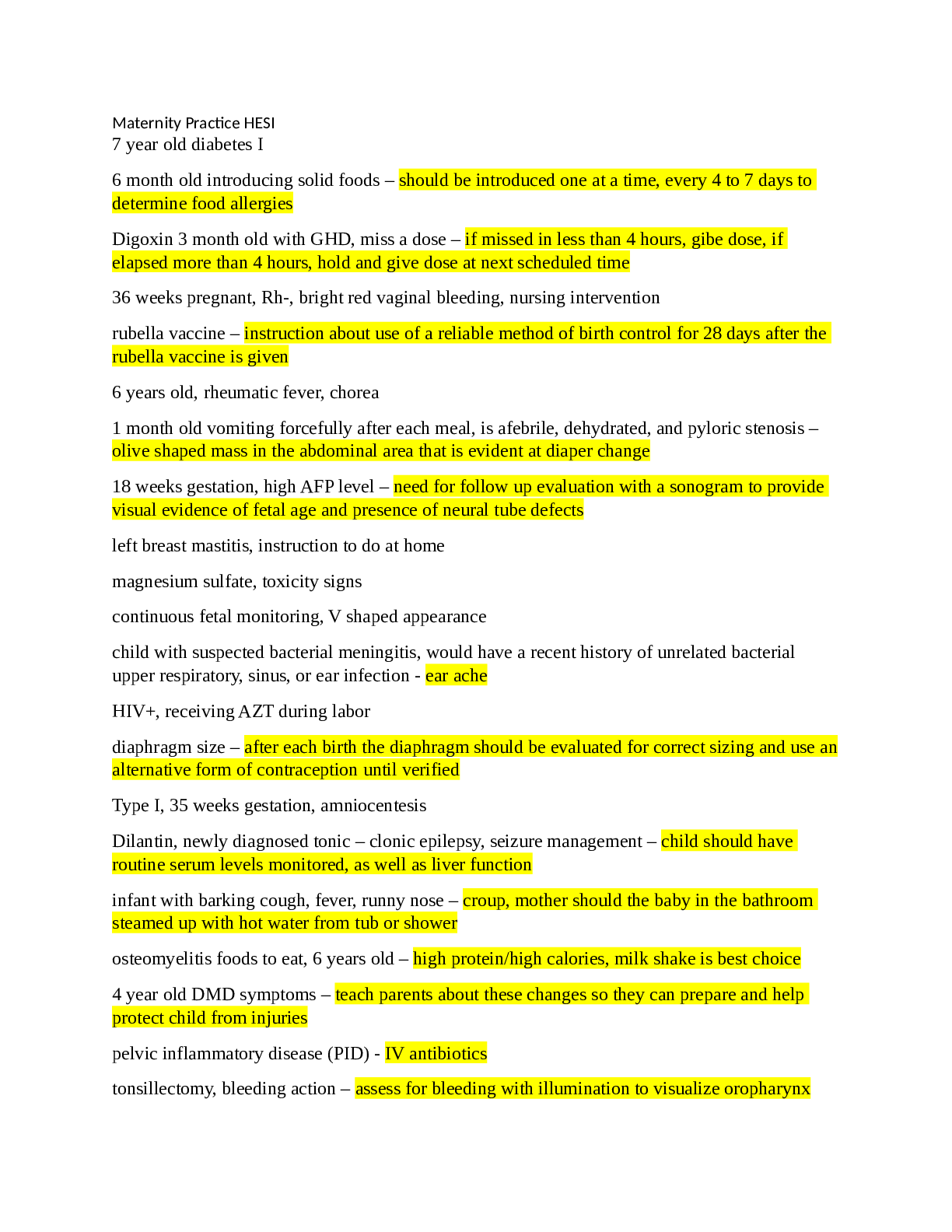

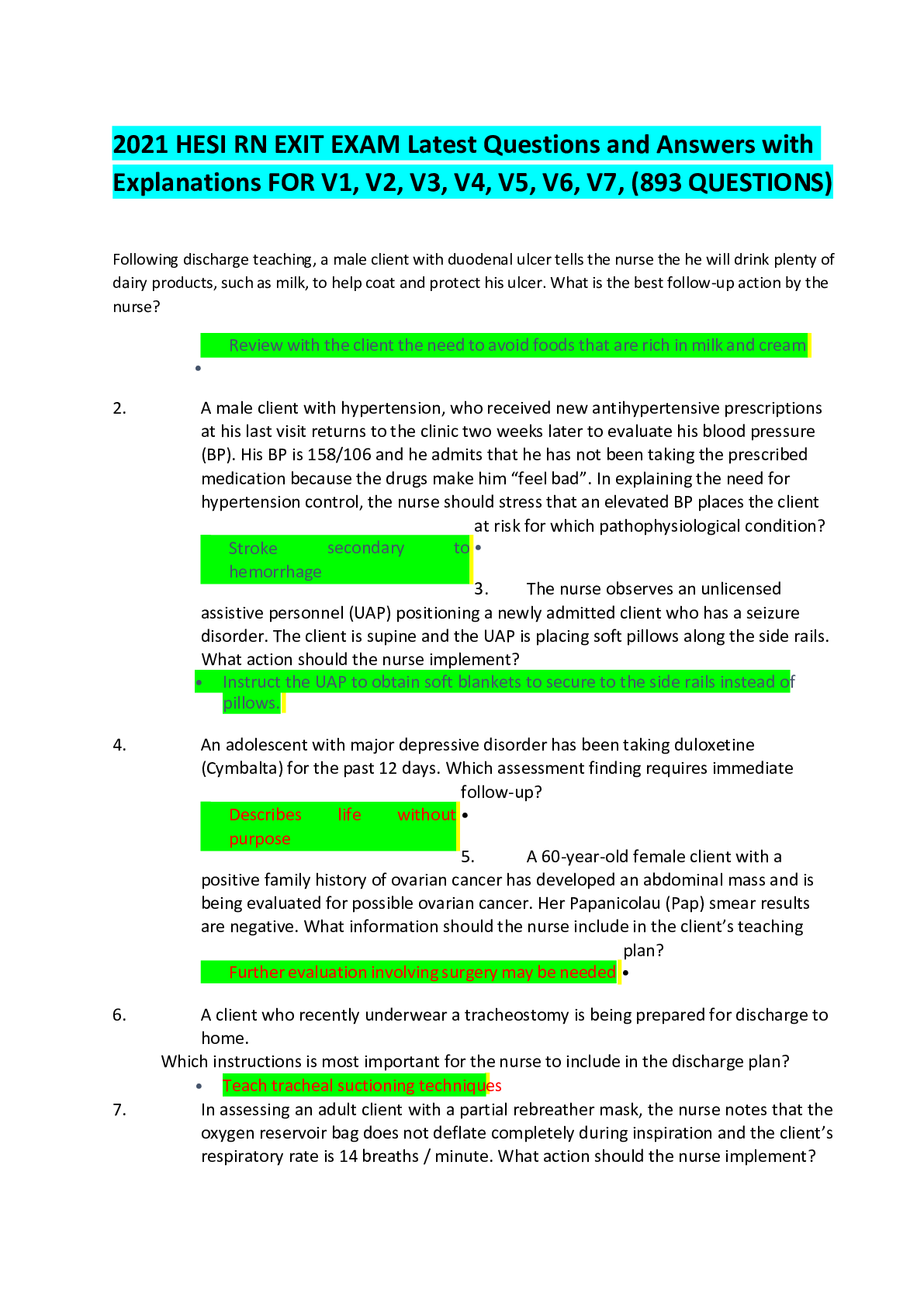
, Latest Questions and Answers with Explanations, All Correct Study Guide, Download to Score A.png)
, Latest Questions and Answers.png)

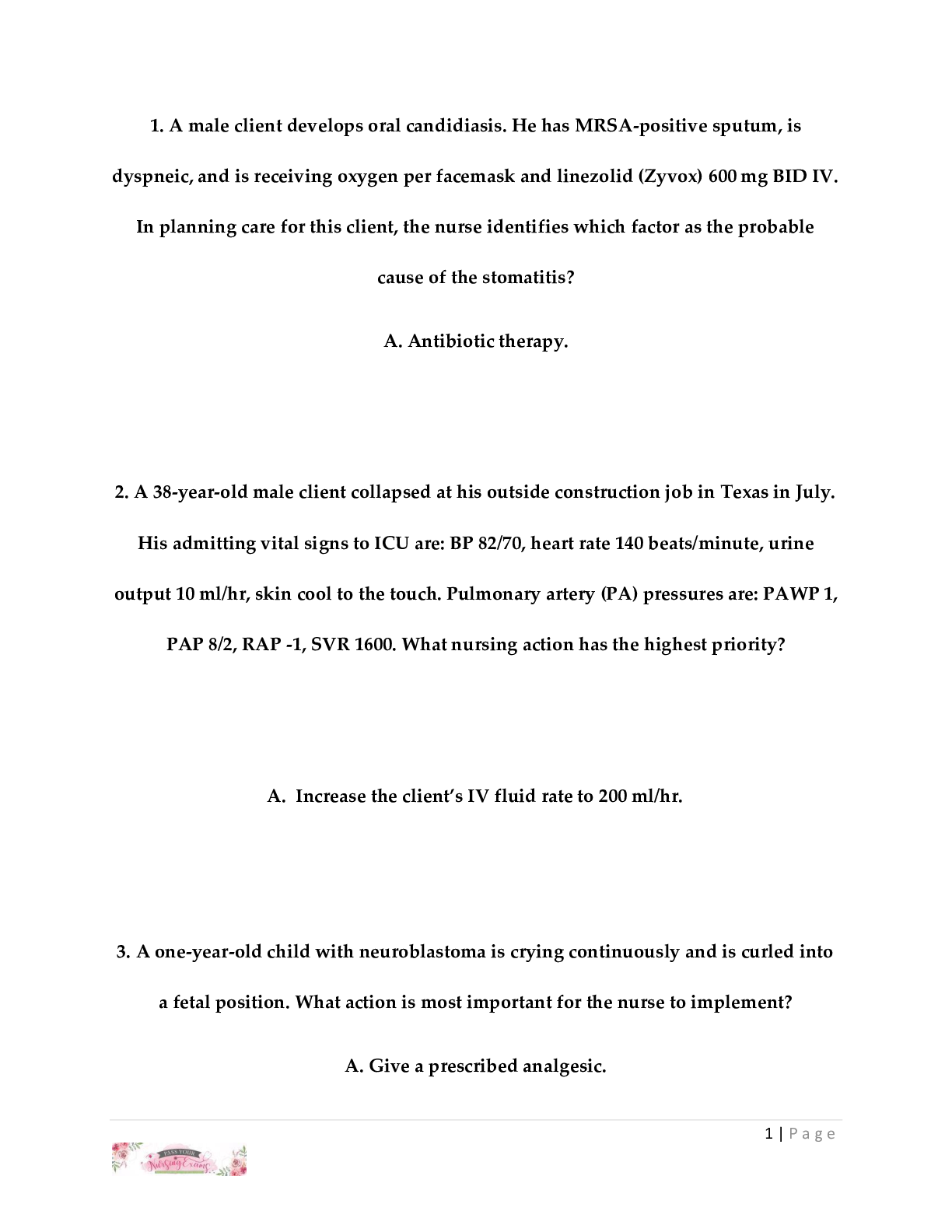
 LATEST QUESTIONS AND COMPLETE SOLUTIONS.png)




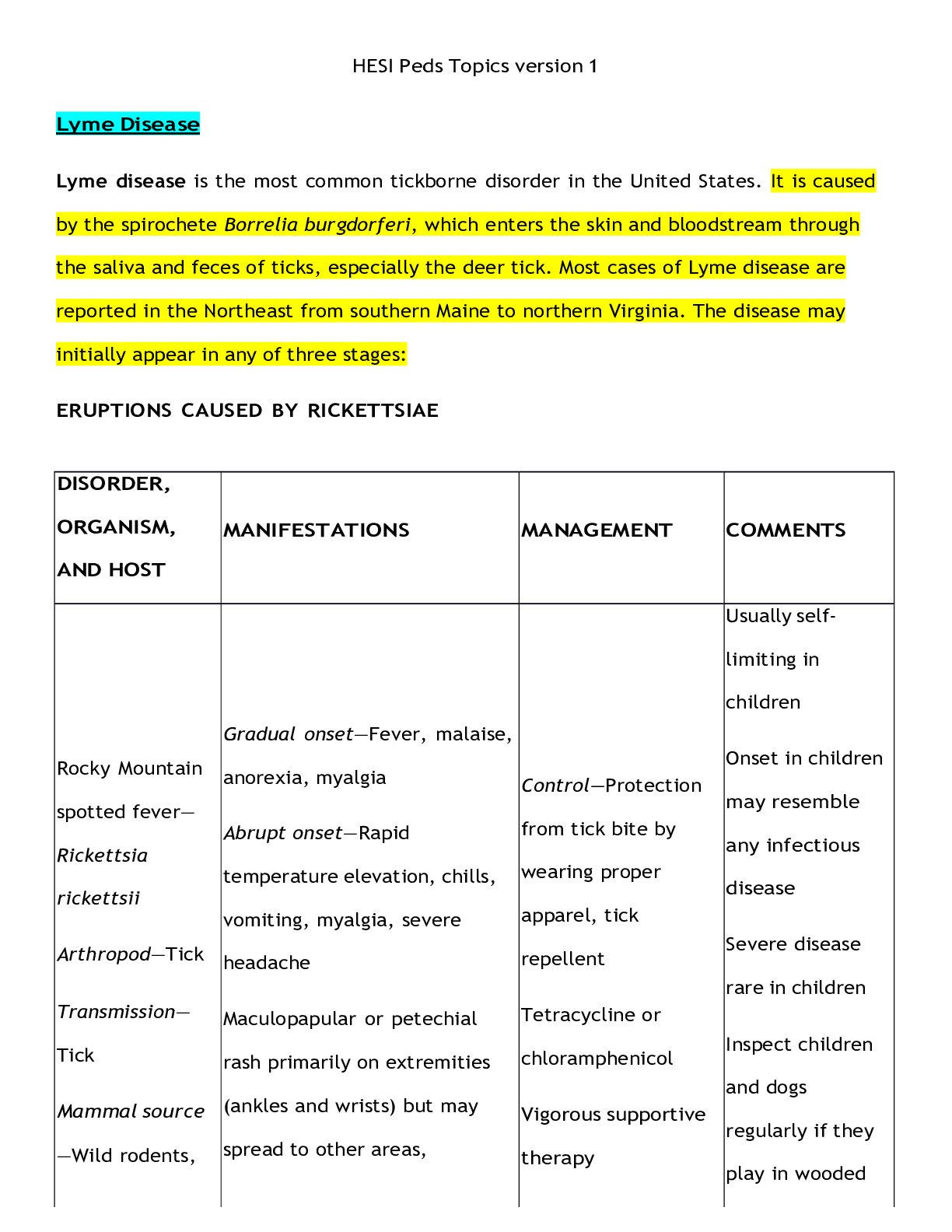
, Latest Questions and Answers with Explana.png)
, Latest Questions and Answers with Explanations, All Correct Study Guide, Download to Score A.png)


